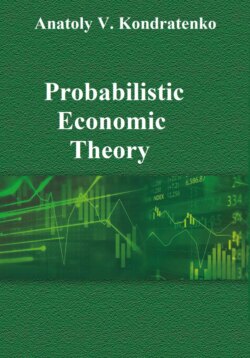Читать книгу Probabilistic Economic Theory - Anatoly Kondratenko - Страница 21
PART B. Classical Economy
CHAPTER III. Classical Economies in the Price Space
1. Foundations of Classical Economy
ОглавлениеThe logic of the present Section is the following. With the understanding that, pursuing own various well-defined goals, the market agents behave to some extent in a deterministic way, in this Chapter we are going to outline the adequate and approximate equations of motion for the economy. In order to design a physical model and derive classical equations of motion for economic systems in the price space ab initio, that is with the five general principles of physical economics in mind, we first make similar approximations and assumptions needed to derive the equations of motion for physical systems. This can be found in the course of theoretical physics by Landau and Lifshitz [1, 2]. In this way we derive equations of motion for economic systems, which are similar to equations for physical systems in form, and are considered by us as an initial approximation for a physical economic model of the modelled economic system.
According to the above-stated plan of actions we could confine ourselves in this Chapter to just writing equations of motion analogous to those obtained in classical mechanics. However, we consider it useful to derive a full row of equations and to make additional comments on our actions. As we have indicated before, according to our approach to classical modeling of economic systems, every economic agent, homo negotians, acts not only rationally in his or her own interests, but also reasonably. They negotiate to reach a minimum price for the buyer and a maximum price for the seller, but also leave their counteragent a chance to gain profit from transactions or to achieve some other goals, economic or noneconomic in nature. Otherwise, transactions would take place only once, while all agents would prefer the continuation and stability of their business.
Besides, we presume that external forces are usually inclined to influence market operations positively, establishing common rules of play that favor gaining maximum profit, utility, trade volume, or something else for the whole economic system. Based on these assumptions, we have a firm belief that there are certain principles of optimization, and their effects on market agents result in certain rules of market behavior and certain equations of motion that are followed by all rational or reasonable players spontaneously or voluntarily. In our opinion, it is they who have the leading role in the market.
Concluding, let us repeat that we will derive below the economic Lagrange equations of motion by recognizing inexplicitly the following five general principles of physical economics:
1. The Cooperation-Oriented Agent Principle.
2. The Institutional and Environmental Principle.
3. The Dynamic and Evolutionary Principle.
4. The Market-Based Trade Maximization Principle.
5. The Uncertainty and Probability Principle.
It is evident that the uncertainty and probability effects begin to play significant role in classical economies only for the markets with huge numbers of agents. We do not concern ourselves with these effects within the framework of classical economy because it is much easier to study these problems within the framework of quantum economy (see next two chapters).
